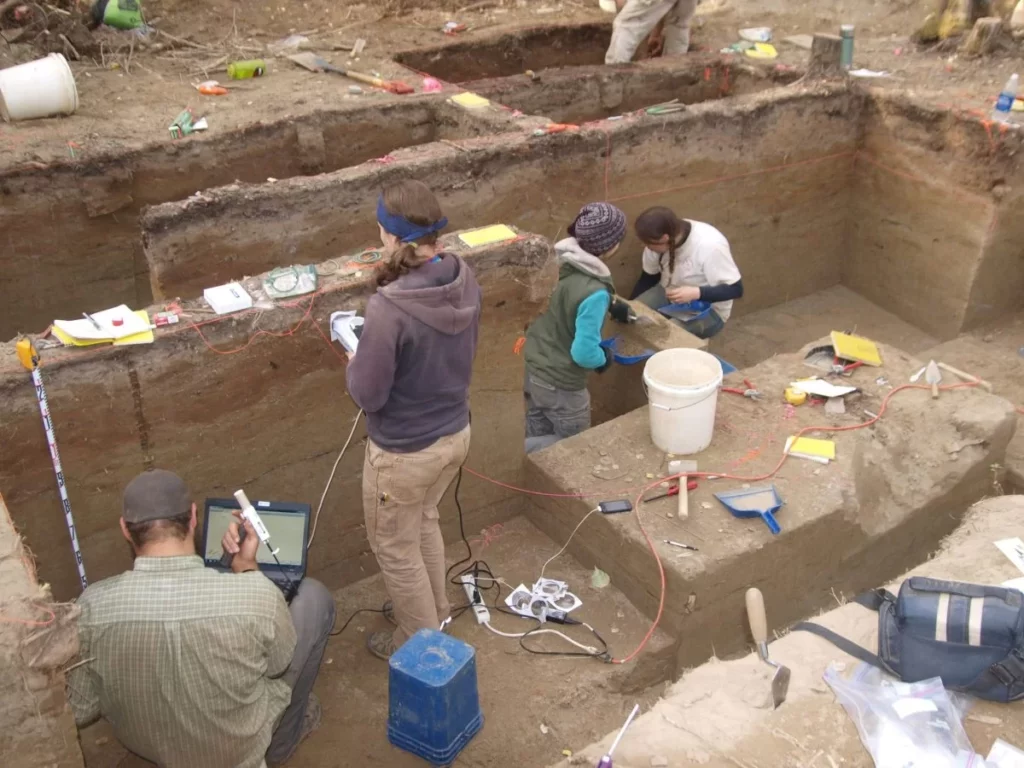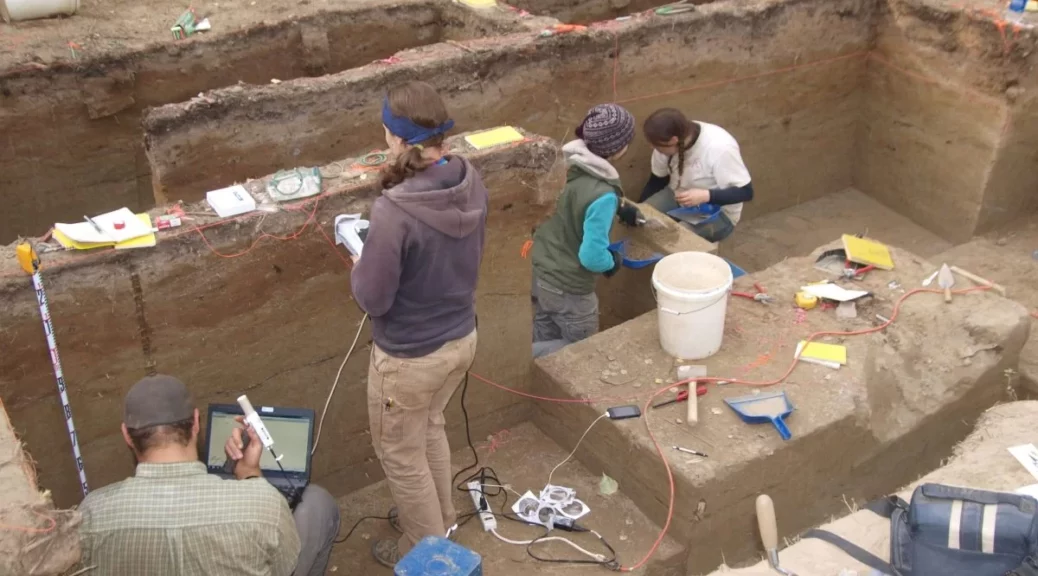A new study shows Early Native Americans in Alaska were freshwater fishermen 13,000 years ago

A team led by the University of Alaska Fairbanks researchers has discovered the earliest known evidence that Native Americans living in present-day central Alaska may have begun freshwater fishing around 13,000 years ago during the last ice age.
Ancestors of Alaska Natives, many of whose livelihoods still depend on freshwater fish such as salmon, may have started subsistence fishing as a response to fewer food resources during long-term climate change, Ben Potter and colleagues say.
The research offers a glimpse at how early humans used a changing landscape and could offer insight for modern people facing similar changes.
“We are looking at humans as ecologists do, as biologists do,” said Ben Potter, a UAF anthropology professor and co-lead author of the paper. “Even very early on, they are able to adapt to changing conditions.”
The study, published recently in the journal Science Advances, shows that people living between 13,000 and 11,500 years ago in what is now Interior Alaska relied on freshwater fish like burbot, whitefish and pike for food. The study builds on earlier UAF findings that documented salmon fishing by the same population of ancient humans.
Native Americans have relied on freshwater fish for thousands of years, but the origins of fishing in North America have been uncertain. Beringia, a region comprising present-day Alaska and Russia, was largely ice-free during the last ice age and is considered a key gateway to the Americas.

“That discovery was really surprising because it was far from the ocean, in an area near the edge of salmon habitat,” said Potter. “That started us thinking: This could be a whole other angle on human ecology beyond large mammal hunting.”
To investigate, Potter et al. used a combination of DNA and isotope analyses to identify 1,110 fish specimens recovered from six human settlement sites – including in the Tanana, Kuskokwim, Susitna, and Copper River basins – in what was once eastern Beringia (central Alaska). They identified four main fish taxa – salmon, burbot, whitefish, and northern pike – whose earliest appearances dated to around 13,000 and 11,800 years ago.
These findings, along with well-documented fishing records from local Native Alaskans, suggest that early Native Americans may have started fishing as a response to environmental change during the Pleistocene-Holocene transition. “Our data collectively suggest that changes in climate and ultimately key mammal resources during the Younger Dryas led to human responses of widening diet breadth to incorporate multiple species of freshwater and anadromous fish, setting a pattern that would be expanded upon later in the Holocene as fish, particularly salmon, became key resources to Alaska Native lifeways,” the authors write.
The bones were found inside homes and hearths and tended to be associated with base camps, rather than short-term hunting camps. They also were far from lakes and streams, so it’s unlikely that predators moved them.
The absence of fishhooks or spears at the sites suggests that the early Alaskans likely used nets and perhaps weirs to harvest the fish.
“This is a compelling, evidence-based case for freshwater fishing at the end of the last Ice Age,” Potter said.
Until the beginning of the Younger Dryas, people relied more on waterfowl to augment large game like bison and elk. When temperatures started dropping around 13,000 years ago, that changed.
“While we don’t know why the use of waterfowl diminished, we know that the climate was changing,” Potter said. “One of the ways the people were able to adapt is to incorporate these new species and new technologies. Burbot, in particular, can be caught in late winter and early spring, when food resources were most scarce.”
The solid tie to modern subsistence activities is also compelling, he said.
